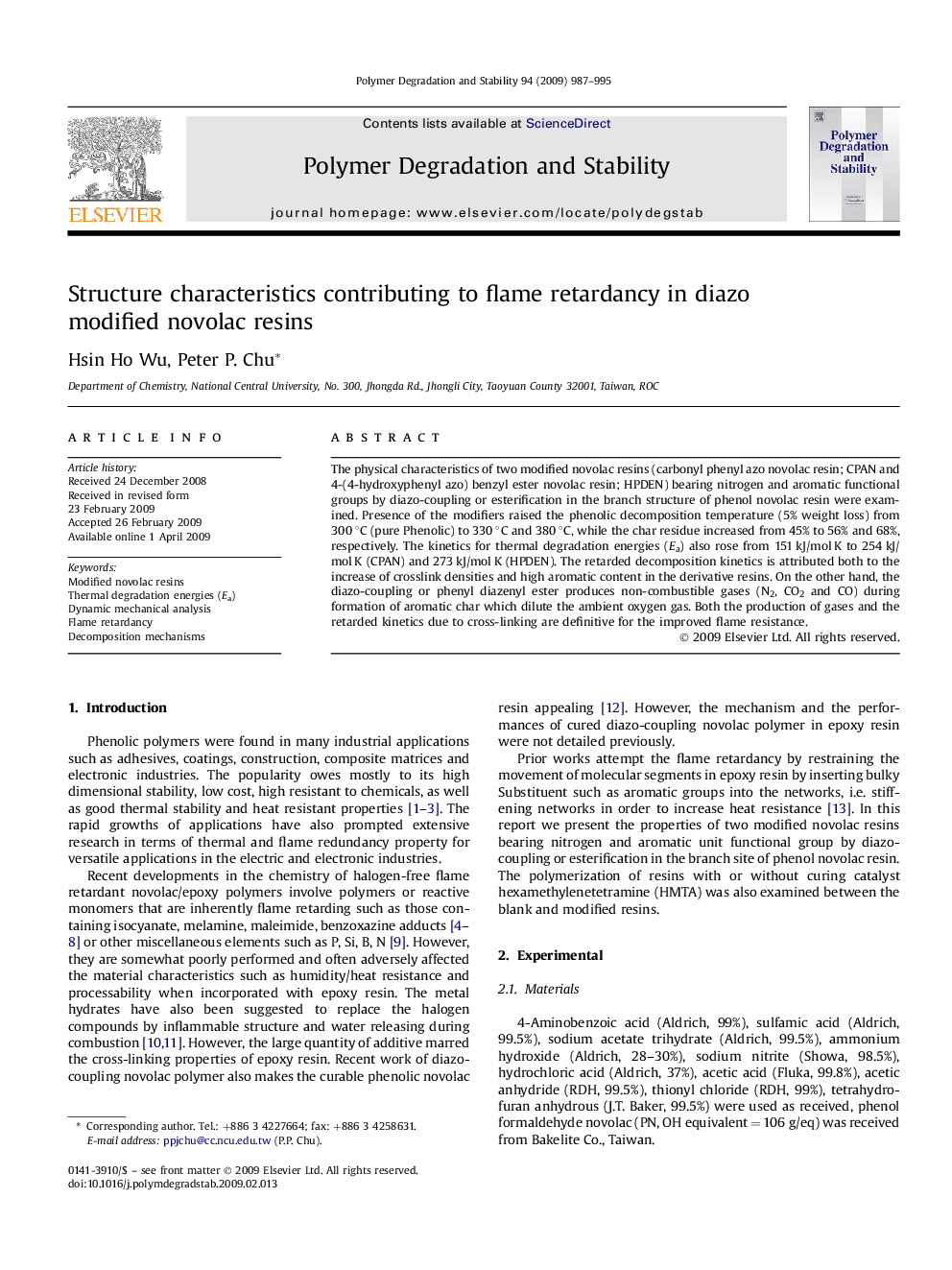| Article ID | Journal | Published Year | Pages | File Type |
|---|---|---|---|---|
| 5203354 | Polymer Degradation and Stability | 2009 | 9 Pages |
The physical characteristics of two modified novolac resins (carbonyl phenyl azo novolac resin; CPAN and 4-(4-hydroxyphenyl azo) benzyl ester novolac resin; HPDEN) bearing nitrogen and aromatic functional groups by diazo-coupling or esterification in the branch structure of phenol novolac resin were examined. Presence of the modifiers raised the phenolic decomposition temperature (5% weight loss) from 300 °C (pure Phenolic) to 330 °C and 380 °C, while the char residue increased from 45% to 56% and 68%, respectively. The kinetics for thermal degradation energies (Ea) also rose from 151 kJ/mol K to 254 kJ/mol K (CPAN) and 273 kJ/mol K (HPDEN). The retarded decomposition kinetics is attributed both to the increase of crosslink densities and high aromatic content in the derivative resins. On the other hand, the diazo-coupling or phenyl diazenyl ester produces non-combustible gases (N2, CO2 and CO) during formation of aromatic char which dilute the ambient oxygen gas. Both the production of gases and the retarded kinetics due to cross-linking are definitive for the improved flame resistance.
